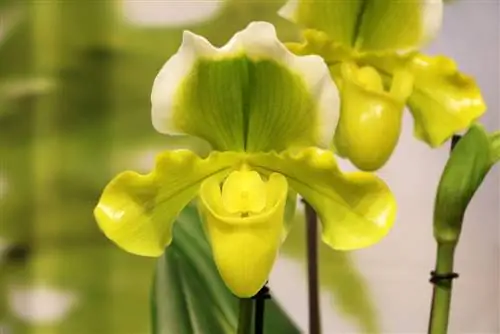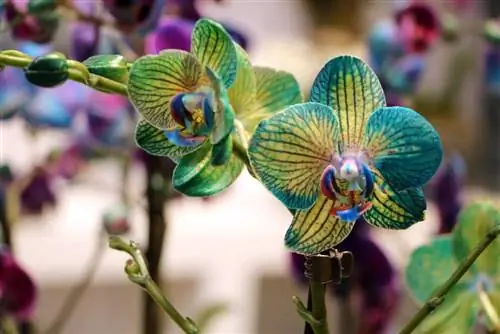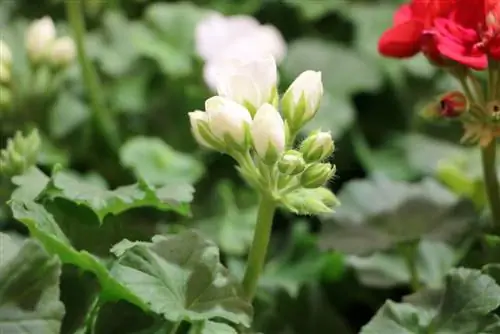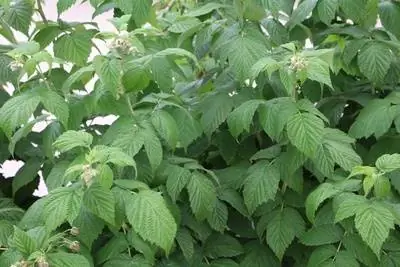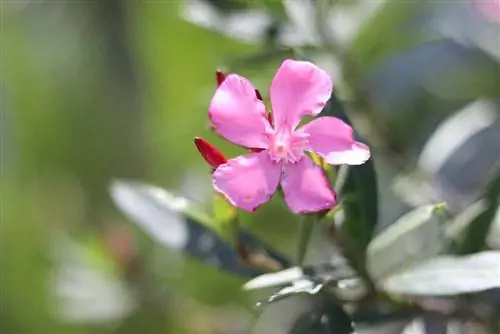- Author admin [email protected].
- Public 2023-12-17 03:39.
- Last modified 2025-06-01 06:48.
If you decide on a new orchid or your specimen appears weak, fertilizing is one of the essential steps to let the “queen of flowers” shine in all her splendor. However, many undesirable errors can creep in when fertilizing Orchidaceae. Due to their ability to withstand nutrient-poor periods, the amount and content of the fertilizer are particularly crucial.
When is fertilization done?
When fertilizing Phalaenopsis orchids, as with all other species in the family, the right time is important. Since excessive fertilization would quickly lead to over-s alting of the roots, special attention must be paid to this. There are two phases when fertilizing orchids:
- Growth
- Flowering time
Orchids are fertilized during the growing season, which begins at the beginning of spring and ends towards autumn. During the flowering period, especially in winter, there is no fertilization at all, otherwise Phalaenopsis would have to process an excess of nutrients, which would have a negative effect on growth. The plant stores certain amounts of fertilizer in the substrate and feeds on it during the flowering period without needing any further fertilizer.
As soon as the first new shoots or leaves appear in spring, you can fertilize. It is important to only fertilize when the moth orchid is growing. If this is not the case, no fertilizer should be used. Fertilization is carried out every two to four weeks, depending on the flower's needs.
He althy orchids need more fertilizer than specimens that do not sprout or have already endured an excess of nutrients. The less you fertilize, the less s alt deposits there are in the substrate and orchid plants tolerate less fertilization better than too much.
Daily fertilization
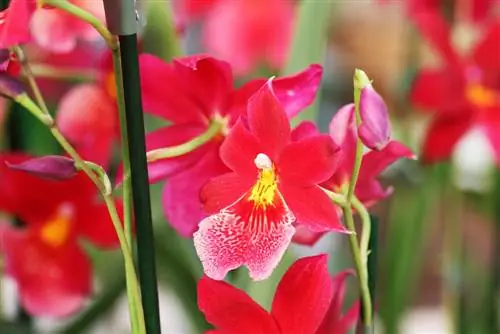
Giving fertilizer daily is only possible if you moisten the orchid every day with the spray bottle. This form of fertilization is possible due to the smaller amount of water given to the orchid by moistening the roots. But don't overdo it and don't fertilize during the rest period.
Fertilizing after repotting
If you want to fertilize after repotting or replacing the substrate, you should not do so immediately. Since moth orchids first have to establish their roots in the new substrate, fertilizers would overload the fresh roots and burn them. Wait about four to six weeks and only then fertilize. The earlier in the year you repot the Phalaenopsis, the earlier the fertilizer should be applied, otherwise the orchid could suffer from a nutrient deficiency.
Water
During the growth phase, you should occasionally water the orchids exclusively with water to free the substrate from fertilizer deposits. The water flushes s alt deposits from the substrate, which is particularly important for the roots. This allows them to recover from the s alts that accumulate during their lifetime. Especially in summer, it's worth watering more often in between to rinse the s alts out of the substrate.
Tip:
You can also use rainwater for watering, as long as you let it run through a sieve first. It is better than tap water and even has a small amount of nutrients that are good for the orchid.
The right fertilizer
Orchids, unlike other plants, do not grow in the ground and therefore require a completely different form of nutrient absorption than, for example, roses or trees. They grow on the branches of tropical trees and get all their nutrients from the rain there. Orchids are designed for few nutrients and therefore require particularly gentle fertilizers that have a low concentration of ingredients. For this reason, typical plant and flower fertilizers should definitely be avoided, as they have too high a concentration of nutrients, which is fatal for the Orchidaceae. There are a variety of special orchid fertilizers that are available as either liquid, fertilizer sticks or powder. Due to the growth habit of the moth orchid, a liquid preparation is particularly suitable, which is easily absorbed through the irrigation water.
The following fertilizers can be found:
- Inorganic fertilizers
- Organic fertilizers
- Fertilizer from our own production (home remedies)
Inorganic fertilizers
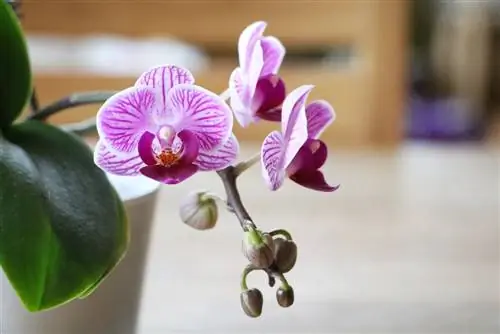
Inorganic fertilizers are best suited to the needs of orchids because they do not consist of decaying substances that the plant cannot utilize. These fertilizers only use the necessary nutrients and trace elements in the form of s alts, which are available as liquid fertilizer, fertilizer sticks, powder or granules. They are manufactured industrially and, due to their composition, can be easily absorbed by the roots of orchids. The most important nutrients that Phalaenopsis can absorb via inorganic fertilizers are:
- Nitrogen (N), supports the growth of leaves and shoots
- Phosphate (P), is required for the formation of flowers and roots
- Potassium (K), ensures greater plant resistance
- Trace elements such as calcium, zinc and others support important metabolic functions
Liquid fertilizer
Liquid fertilizers have proven to be the best fertilizing solution for moth orchids. Due to their liquid form, they are simply added to the immersion or irrigation water and can even be administered via spray bottles. Liquid fertilizer is offered in specific compositions, which can be found on the packaging and provide information about the contents of the fertilizer. The nutrients N, P and K mentioned above are given as numbers on the packaging in exactly this order: 20 - 20 - 20 as an example. This means that each of these ingredients makes up 20 percent of the fertilizer. The remaining percent produce trace elements and certain binding agents. The composition 20 - 20 - 20 is by far the most commonly used variant and is completely sufficient for Phalaenopsis species. You do not need any special fertilizers with higher nitrogen or phosphate concentrations.
Fertilizer sticks, powder and granules
This question concerns many orchid owners and especially newcomers to the field are often overwhelmed. Since the classic orchids, which can be found in many German households today, are always in a loose substrate, fertilizing with fertilizer sticks or even granules is not recommended. The granules or powder are difficult to distribute and appear in the substrate in different concentrations due to their shape. The same applies to fertilizer sticks, which, due to their processing, are only used for orchids that grow in a solid substrate. The rods need soil to function at all and then only release nutrients in an extremely small environment. This then leads to over-fertilization of individual root sections and salinization of the substrate in the immediate vicinity of the stick. Therefore, these inorganic fertilizers such as Substral sticks should be completely avoided.
Organic fertilizers
Due to the growth habit of Phalaenopsis, conventional organic fertilizers such as compost, horn shavings or animal manure should be completely avoided. Since they sit in the substrate with open roots and it does not have the necessary microorganisms like conventional potting soil, the nutrients cannot be absorbed from the substrate. This means that the orchid is not supplied with enough nutrients and dies over a certain period of time. The only organic fertilizers that may be used are special substrates such as Compo's liquid fertilizer, which is designed for orchids.
Are there home remedies?
More and more gardeners want to switch to other forms of fertilization and are therefore looking for classic home remedies that offer cheaper fertilizer. There are some luxury foods and foods in the household that are suitable for fertilization, but compared to the preparations specifically tailored to orchids, they are only recommended as an additive. These include:
- Boiled rice water (cold)
- Contents of used tea bags
- Molasses
- Milk
- Boiled coffee (cold)
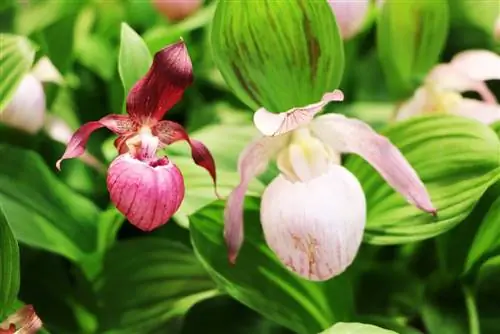
Rice water and milk should be mentioned as all-rounders among these fertilizers. They have proteins and minerals such as calcium, which are essential for plants. Coffee, on the other hand, is very good for an energy boost for plant growth due to its caffeine content, but should not be used too often. Molasses and the contents of tea bags after it has been boiled are also suppliers of calcium and nitrogen, which are essential for the survival of orchids.
Best fertilizers
There are a variety of manufacturers on the market that produce special fertilizers for orchids. These are based on the concentration of 20 - 20 - 20 mentioned above, but do not always indicate this on the packaging. The best orchid fertilizer brands include:
- Seramis
- Compo
- Chrysal
Seramis has been at the forefront of liquid fertilizers for years due to its composition, affordable purchase price and easy handling. This fertilizer is really recommended for those new to orchids. Compo liquid fertilizer is an organic-mineral-based fertilizer consisting of guano, a paste made from calcified seabird excrement, and is specifically aimed at forming strong plant tissue. Chrysal, on the other hand, is worth it if you want an abundance of flowers. This liquid fertilizer also has additional vitamins that positively stimulate the orchid's metabolic processes.
Fertilizing: a guide
In order to fertilize the orchids appropriately, a few factors should be taken into account that protect the plants from burning and a lack of nutrients. Orchids are not the easiest plants to care for and the gardener quickly takes offense at small mistakes. Fertilizing is easy with the following instructions.
- After you have decided on a fertilizer, you should purchase it either in a specialist store or in online shops.
- Look at the fertilizer packaging and when fertilizing, follow the concentration information stated there. When it comes to orchids, it is extremely important never to use too much fertilizer. Just use a little less fertilizer and the plant will thank you.
- Since liquid fertilizer is best suited for Phalaenopsis, you should administer it together with the irrigation water. In this way, the entire root ball is enriched and the individual roots can easily absorb the nutrients.
- Use the irrigation water as usual. That is, prepare the necessary amount of water and add the liquid fertilizer. Now immerse the root ball in the immersion water including fertilizer for a few minutes and put the plant back into the substrate.
- Repeat this process approximately every two to four weeks during the growth phase.
- Alternatively, you can also fertilize the orchid using a spray bottle. To do this, add the liquid fertilizer to the water and moisten the roots every day.
Tip:
Repot your orchid about every two years or change the substrate. Since fertilizer increases in intensity in the substrate over time, it is necessary to change the substrate every few years to prevent an excess of s alts.
Detecting overfertilization

No matter whether you are new to orchid keeping or are more experienced, it can always happen that orchids are over-fertilized. This is mainly due to the sensitive roots and the substrate, which releases too much s alt into the plant after insufficient watering. The following signs indicate possible overfertilization:
- white, powdery layer on the substrate
- blackened roots
- Leaf tips dry up
If one of these symptoms occurs, you should definitely refrain from fertilizing, water the root ball and replace the substrate. Afterwards, do not use any further fertilizer and proceed as after repotting.

